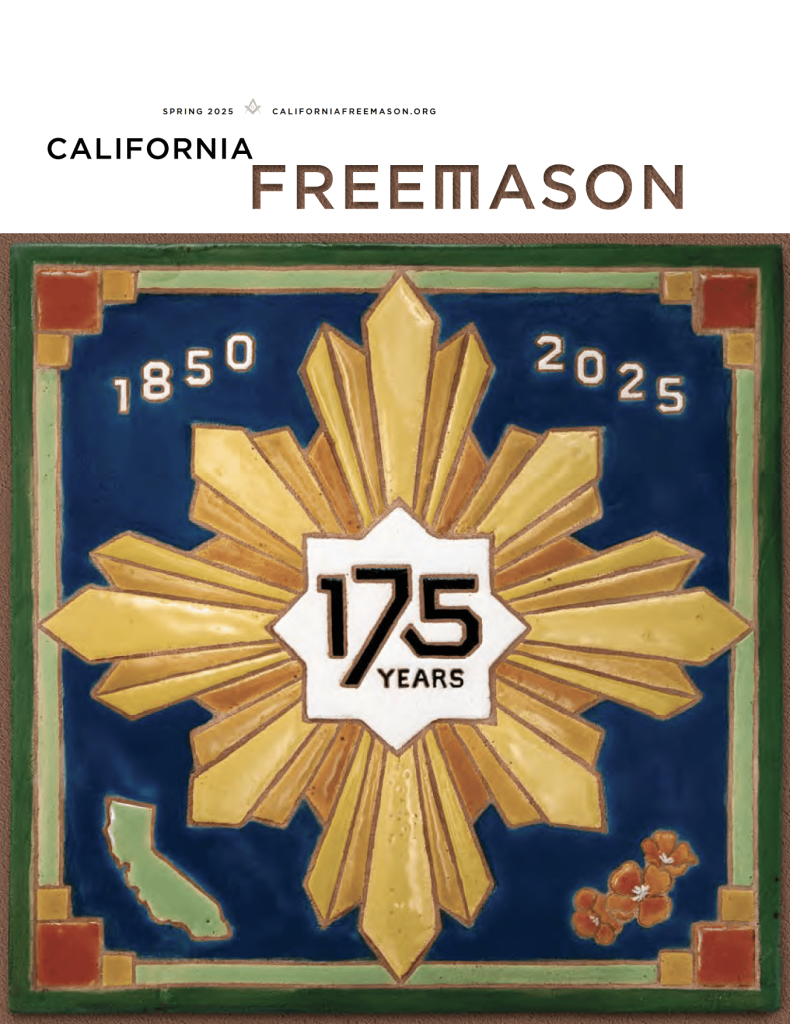
For 175 years, Freemasonry has played a significant and often understated role in the development and community life of California. From the Gold Rush era to the present day, California Masons have been instrumental in establishing civic institutions, providing relief during crises, and fostering personal growth among their members. This timeline highlights key milestones in the rich history of the Grand Lodge of California, Free & Accepted Masons.
The mid-19th century saw a massive influx of people into California during the Gold Rush, and among them were many Masons who brought their traditions and desire for fraternal connection.
1849: Masons play a crucial role in the Constitutional Convention in Monterey, helping to establish a system of free public education in California.
April 10, 1850: The Grand Lodge of California officially opens in Sacramento, bringing together members from three charter lodges. Jonathan Drake Stevenson is elected as the first Grand Master. This marks the formal beginning of organized Freemasonry in the state.
October 11, 1850: During a devastating cholera outbreak in Sacramento, 69 Masons raise an impressive $32,000 (equivalent to over $1.2 million today) to open a hospital at Sutter’s Fort, one of the state’s first and California Freemasonry’s initial large-scale charitable effort.
October 14, 1850: The Benicia Masonic Temple opens, becoming the first purpose-built lodge in California.
1851: Membership in California Freemasonry more than doubles to 500 members.
June 19, 1855: The first Prince Hall Grand Lodge of California is formed by three charter lodges, marking the establishment of African American Freemasonry in the state.
1857: The San Francisco Masonic Board of Relief is established to coordinate charitable donations for indigent members, a model later adopted in other major California cities.
May 15, 1861: California Masons, including Governor John G. Downey, lay the cornerstone for the new State Capitol building in Sacramento.
1872: Grand Master Leonidas Pratt lays the cornerstone for the new San Francisco City Hall building.
1875: By its 25th anniversary, the Grand Lodge of California has chartered nearly 200 lodges with a membership of 11,000.
The late 19th and early 20th centuries saw continued growth and significant contributions to public welfare.
1878-79: California Masons donate $113,000 (over $3 million today) to aid victims of a yellow fever outbreak in the Mississippi Valley, showcasing their commitment to broader relief efforts.
1898: The Masonic Homes of California open in Decoto (now Union City), providing care for Masons, their wives, and widows—a testament to the fraternity’s commitment to relief.
April 18, 1906: Following the devastating San Francisco earthquake and fire, California Masons immediately mobilize, providing extensive relief and support to their members and the wider community, despite their own Grand Lodge temple being destroyed.
October 12-13, 1911: A grand Masonic parade in San Francisco marks the laying of the cornerstone for a new Grand Lodge temple.
1914: The Midnight Mission is founded in Los Angeles, dedicated to feeding the homeless, with its board consistently comprising primarily California Masons.
August 4, 1917: The Masonic Ambulance Corps departs San Francisco for training, eventually serving on the frontlines in France during WWI. California lodges raise nearly $70,000 for a new War Fund.
1919: The Order of DeMolay, a Masonic youth order for young men, is founded. This is followed by the establishment of Rainbow Assembly (1920) and Job’s Daughters (1921) for young women.
September 7, 1920: Grand Master Charles Adams proclaims the first statewide Masonic Public Schools Week (now Public Schools Month), initiating a long-standing tradition of supporting public education.
1922-23: Shriners Hospital for Children opens in San Francisco, a significant charitable endeavor with strong Masonic ties.
The mid-20th century saw a peak in Masonic membership, followed by diversification and a renewed focus on community engagement in the modern era.
1940s: World War II acts as a catalyst for membership, with applications for degrees spiking during and immediately after the war.
1958: The iconic California Masonic Memorial Temple is constructed on Nob Hill in San Francisco, becoming the headquarters of the Masons of California. This white marble building is a landmark of mid-century architecture.
1969: The California Masonic Foundation is established to further the education of young people, from kindergarten through college, expanding the fraternity’s philanthropic reach.
1998: Masons launch KIDS ID, a free fingerprinting and photo identification program aimed at child safety.
2000: The Grand Lodge of California celebrates its 150th anniversary, reflecting on a century and a half of service.
2011: The California Masonic Foundation launches a statewide initiative to support public education in critical areas like elementary-age literacy and middle school algebra.
2015-Present: The Grand Lodge experiences a period of expansion, welcoming new lodges in underserved areas and adapting to the needs of a modern fraternity, focusing on personal and spiritual growth alongside continued community involvement.
2025: California Freemasonry celebrates its 175th Anniversary, reflecting on a profound legacy of brotherly love, relief, and truth that has shaped the Golden State.
From its origins amidst the Gold Rush to its ongoing commitment to education and charity, California Freemasonry has consistently adapted and contributed to the fabric of the state, remaining a vibrant force for good for 175 years.
Our secret isn’t ancient rituals or secret ceremonies. It’s our members. Meet some of them here. Our members come from all backgrounds and all walks of life. The average age of new members is about 36..
While the Masons of California represents the largest Masonic organization in the state, it isn’t the only one.
WhatsApp us